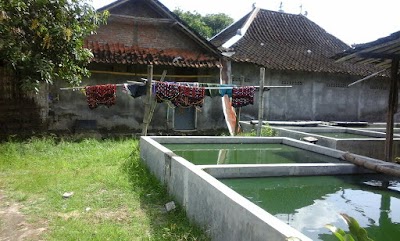Keram River (Keram River)
Overview
Situated in the enchanting region of East Sepik in Papua New Guinea, the Keram River is a hidden gem that weaves together a rich tapestry of history, culture, and natural beauty. For foreign tourists seeking an off-the-beaten-path experience, this river offers an unforgettable journey into the heart of Papua New Guinea's pristine wilderness and vibrant local communities.
The Keram River meanders through lush landscapes, creating a network of waterways that sustain the lives of the indigenous people along its banks. Historically, this river has served as a vital lifeline for local communities, acting as a primary means of transportation and trade. For centuries, neighboring tribes have relied on the Keram River, utilizing dugout canoes and traditional methods to travel, fish, and barter goods. Its significance extends beyond mere sustenance; the river is deeply woven into the cultural and spiritual fabric of the indigenous population.
One of the most compelling aspects of the Keram River is its role in preserving ancient traditions and crafts. The villages along its banks are renowned for their exquisite carvings and artworks. These handcrafted items are not only beautiful but hold significant cultural value, often illustrating ancestral stories and traditional customs. Tourists visiting these communities can witness artisans at work, carving intricate designs into wood, creating masks, and weaving traditional garments. This offers a rare opportunity to see age-old techniques passed down through generations.
For ecotourism enthusiasts, the Keram River area is a veritable paradise. The river and its surrounding rainforests are home to an array of unique flora and fauna. Birdwatchers will be particularly thrilled by the sight of colorful bird species, some endemic to Papua New Guinea. The dense vegetation along the riverbanks provides shelter for various wildlife, making each boat trip along the river an exciting adventure filled with potential wildlife sightings.
For those fascinated by anthropology and ethnography, the Keram River offers a window into the diverse cultural practices of the Sepik people. The tribes in this region are known for their distinct social structures, rituals, and ceremonies. One notable aspect is the "Haus Tambaran" or spirit house, which plays a crucial role in community life. These structures are often adorned with elaborate carvings and serve as the epicenter for tribal gatherings, rituals, and storytelling sessions. Engaging with local communities and learning about their ways of life can provide insights into some of the world’s most unique cultural traditions.
The Keram River also boasts significant historical importance, having been an area of exploration and study for early colonial adventurers and anthropologists. Visits from these explorers helped document and bring wider recognition to the region’s unique cultural heritage. The interplay between the river’s natural environment and human activity has made the area a focal point for studies on sustainable living and ecological balance.
Adventure seekers will find plenty to explore, as the Keram River presents numerous opportunities for outdoor activities. From kayaking and canoeing to guided treks through the surrounding rainforests, there’s no shortage of ways to immerse oneself in the region's natural beauty. Nightly excursions offer a different perspective, as the nocturnal sounds of the jungle come alive and the clear, starry skies provide breathtaking views.
The infrastructure around the Keram River remains minimal, preserving its pristine and untouched charm. Tourists should prepare for rustic accommodations and a closer connection to nature. Staying in local guesthouses or camping by the river allows for a more immersive experience, and the hospitality of local communities ensures that visitors feel welcome and comfortable despite the simplicity of the facilities.
An interesting aspect of the Keram River is its seasonal change in character. During the wet season, the river swells, making navigation easier but also creating challenges such as flooding in low-lying areas. In contrast, the dry season reveals more of the riverbanks and narrows certain passages. This cyclical nature of the river highlights its dynamic environment and adds an element of unpredictability to any travel plans.
In conclusion, the Keram River in East Sepik, Papua New Guinea, promises a rich blend of cultural immersion, natural beauty, and adventurous exploits. Whether you are a history buff, cultural enthusiast, nature lover, or thrill-seeker, the Keram River has something unique to offer. Visiting this remarkable river allows foreign tourists to step back in time and experience the untouched beauty and vibrant traditions of Papua New Guinea.





